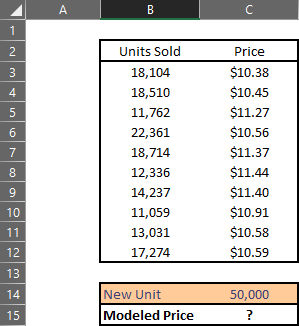
In fact, the question is not limited to LINEST() and Excel. And there is a real question of whether the const argument is a useful option at all. Setting the const argument to FALSE can easily have major implications for the nature of the results that LINEST() returns.

const is either TRUE or FALSE, and indicates whether LINEST() should include a constant (also called an intercept) in the equation, or should omit the constant.X values represents the range that contains the variable or variables that are used as predictors.Y values represents the range that contains the outcome variable (or the variable that is to be predicted by the regression equation).=LINEST(Y values, X values, const, stats)

One of the options that has always been available in Excel's LINEST() worksheet function is the const argument, short for constant.


 0 kommentar(er)
0 kommentar(er)
